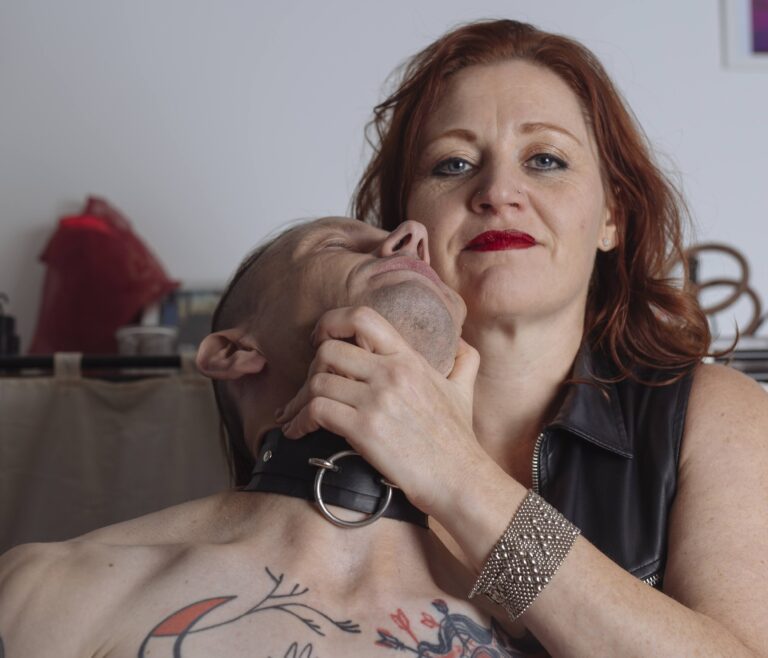Cette page n’existe plus
Malheureusement, la page que vous cherchez à été supprimée ! Vous pouvez toutefois visiter les pages de mon site ou effectuer une recherche depuis cette page !
Liste des pages
- Coaching BDSM
- The Justice Room : un donjon BDSM à mon image
- Inanna Justice, spécialiste des jeux BDSM à Paris
- Mes événements BDSM
- Photos et vidéos BDSM
- Foire aux questions
- Mes écrits
- Contact et liens
- Wishlist
- S’abonner à ma newsletter gratuite
- Politique de confidentialité et note d’information
Le blog

Dungeon Tour with Rachel Rampage
Une visite de la Justice Room avec la charmante Rachel Rampage (en anglais).

Interview avec Lisa Opel de Deep & Dirty podcast
Interview en anglais. Parlons FemDom : consentement, limites, spiritualité, masochisme et bien plus. Vous trouverez le podcast avec ce lien.

Vous voulez faire des tournages avec moi ?
Vous avez regardé mes courts métrages et vous vous imaginez à la place de mon partenaire de jeu. Vous fantasmez en pensant au plaisir que vous auriez à vous exhiber devant la caméra, vu par des milliers de personnes à travers le monde… Eh bien, c’est fabuleux ! Je suis à la recherche de nouvelles…

Interview with The FemDom Digest
I recently came across an account on Instagram that caught my eye: The FemDom Digest. We mutually followed each other, and quickly started sending private messages. As my readers know, I love when people take interest in the work that I do. I really appreciated the thoughtful questions, and have a feeling that this won’t…

Faire du mal sans laisser des marques
J’ai fait un autre livestream avec la super plateforme JoyClub. Le sujet ? Le sadomasochisme sans laisser (trop) de marques. Beaucoup d’entre vous n’aiment pas les traces sur le corps et je donne quelques astuces, toujours avec l’aide de mon partenaire de jeu Wilfried. Vous pouvez le visionner en vous inscrivant sur le site (c’est…

Vidéo sur JoyClub
J’ai fait un live stream sur JoyClub récemment : Bondage avec foulards. Cliquez ici pour la vidéo et un article sur le bondage. L’inscription est gratuite avec mon lien de parrainage. Bonne visionnage !
Les témoignages

Un deux trois
Me voici me revoilà pour la troisième fois. Quatre jours avant le jour J : je suis en repos aujourd’hui et mon esprit vagabonde à penser enfin à lundi. Depuis quelque temps, l’idée de jouer avec des bougies me titillent. Ce n’est pas une énorme envie, mais il est vrai que c’est quelque chose que…

Le décompte
Je prends du temps pour moi, je me découvre, qui suis-je ? Qu’est-ce que j’aime ? Je me renseigne sur tout, littéralement tout ! Un jour je découvre un reportage de quelqu’un qui s’est essayé au BDSM. Je regarde avec beaucoup d’attention et là je percute enfin ! Ce lâcher-prise, c’est exactement ce qu’il me faut. Alors je continue…

L’histoire commence comme telle :
L’histoire commence comme telle : Ça faisait plusieurs semaines que j’épluchais le site en long en large et en travers, en m’étonnant jour après jour de la plume de son autrice. Allez, c’est décidé… j’ouvre le questionnaire et j’y réponds sincèrement…et je le referme…Je l’ouvre à nouveau le lendemain… quand s’ensuit une bataille entre moi…

Apaisée et calme
Note d’Inanna Justice : les barbelés sont particularement risqué, une pratique RACK (comme d’autres que vous pouvez lire sur mon site). Avant de faire cela avec mon petit monstre (13, l’autrice de ce compte rendu), il y avait des longues discussions sur plusieurs mois pour parler des risques. Je déconseille fortement cette pratique aux personnes…

Les chatouilles et les coups
Après avoir gravi les étages, je me retrouva devant la porte du donjon d’Inanna Justice. Je toqua et Inanna Justice, souriante, élégante et gracieuse, m’ouvrit la porte. Je rentra et déposa mes affaires. Inanna Justice me proposa gentiment un verre d’eau que j’accepta volontiers. Nous discutâmes rapidement des règles de sécurité et je me dirigea…

Immobilisé et aveugle
Après avoir parcourut votre site et lut vos articles et témoignages, j’ai décidé de passer le pas. Une fois le formulaire remplit, patte blanche montrée, la prise de contact fut brève et rapide. Un appel vidéo plus tard, le jour fatidique arriva. Une fois arrivé à l’adresse donnée (et les escaliers montés), je me retrouve…
